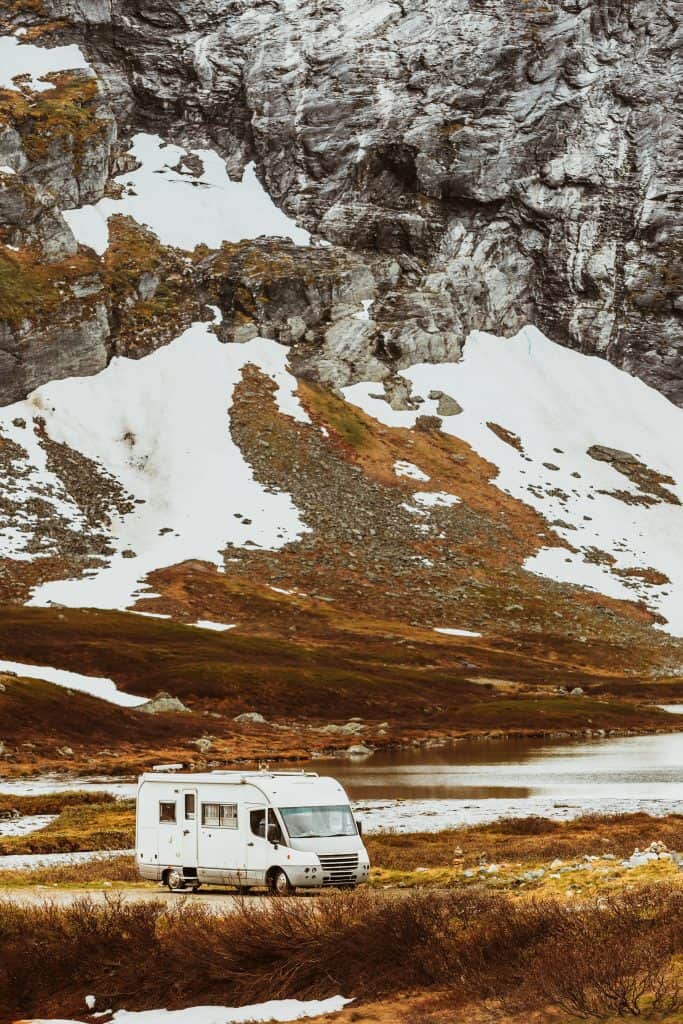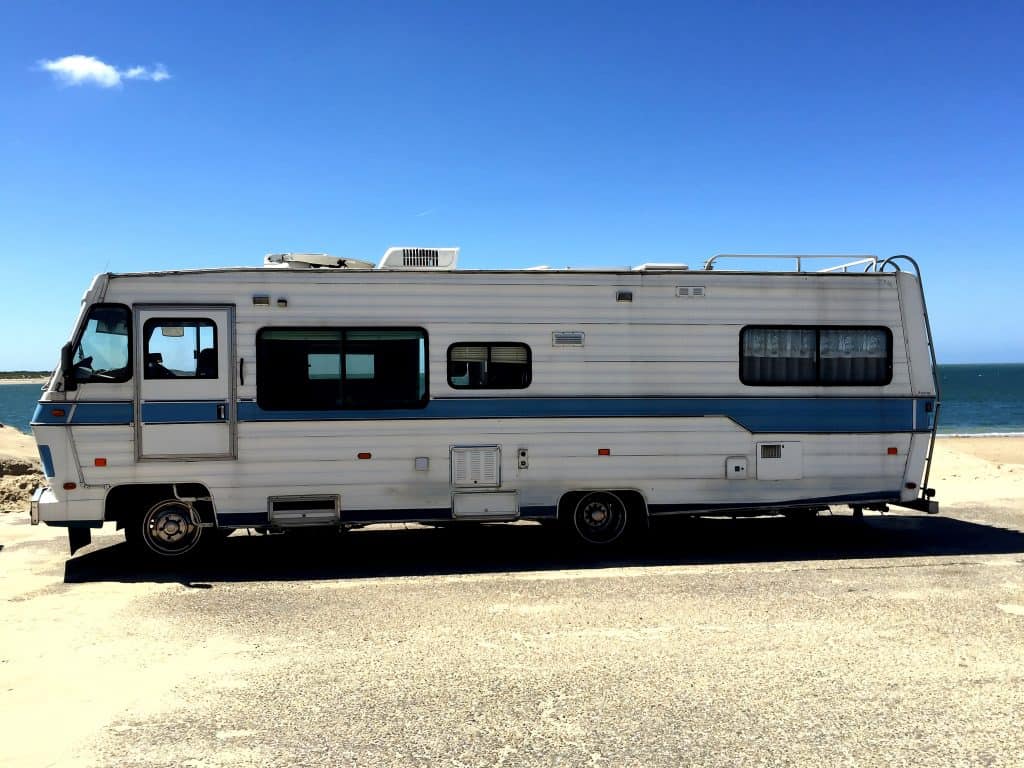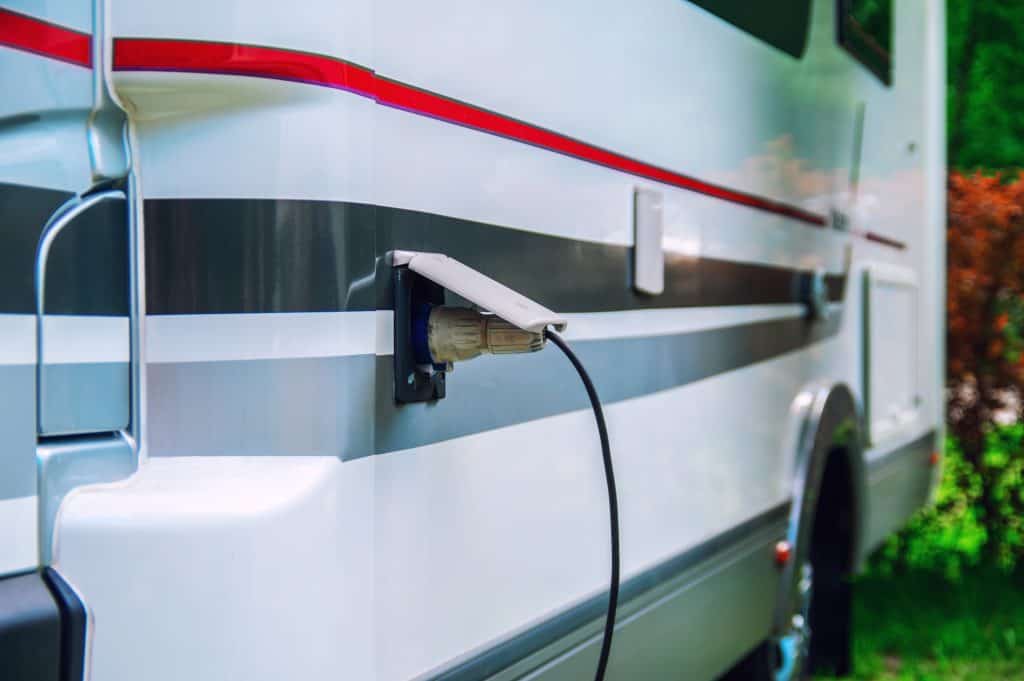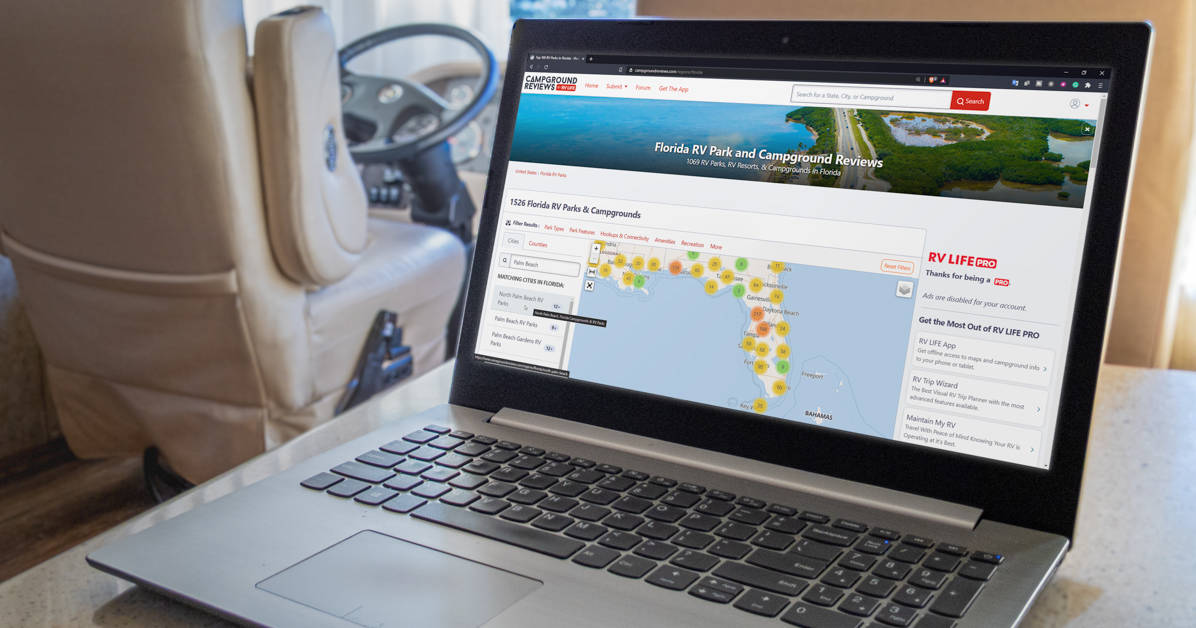Even though AC may not be a huge deal to some, having all your operating systems in your RV fully functioning is important. Especially if you are a going to a nice hot vacation spot, you are going to want some relief from the heat.

The first place to check if your AC isn’t working would be the circuit breaker. Often times, the breaker has been tripped, impeding your AC’s ability to work.
A quick fix for this is to simply find the circuit board and reset the system.
If fixing the breaker doesn’t work, you may have more troubles than just a tripped breaker. Hopefully, it is nothing too extensive. Not to worry though, even if it is.
In each RV there should be an Owners Manual or AC operating packet that can teach you a little bit more about your specific make and model. This will aid you when you go exploring for the parts and places that may be damaged or affected.
We’re not experts in this field of repairs, so some of our suggestions will only get you so far in helping you fix some common issues and errors that we have seen with RVs.
Overall, if you aren’t comfortable making some electrical repairs or climbing on the top of your RV, calling a professional service area will not only help keep you safe but also will help make sure that the problem isn’t made worse.
If you are like me, sometimes if I touch something to try to fix it, it ends up becoming more broken if I don’t feel confident in what I am doing.
This post will be given with the best hopes and insights we have to give you for helpful tips and insights that may help you figure out some solutions before calling the repair man.
Anything to have a lesser hassle is worth it! Below is a brief solutions guide about some common issues and fixes.
Solutions Guide

Unfortunately, there are more than just one reason that an AC unit could stop working. It could be anywhere from a clogged filter, to fried circuits. You may also be dealing with a specific issue for a specific RV. We will give you a few ideas on a general basis to give you a good head start.
Before we talk about replacement parts, we get to play detective in finding out what could have gone wrong to make sure you can get some quick and easy solutions so that fixing the problem (or telling the repair company what happened) will be less of a hassle.
My goal with this post is to also save you a little bit of time and energy and even maybe a little money. You don’t always have to get a replacement after something goes wrong. Sometimes we just have to make a few corrections, clean a few coils and we are on our way.
Keep in mind that “prevention” is a whole lot easier to do for our RVs than it is to try and just fix whatever was broken–easier on your RV and wallet so you can spend more time enjoying your vacation.
By doing regular check-ups and cleaning of your RV you will be able to have smoother trips and fewer expenses.
If you have an older or used RV, feel free to contact the brand’s company or dealers for specific questions or parts that you may need.
Below you will see common “symptoms” of what could be happening to your RV. We will be going over each one and giving you a simple rundown of what you can do to fix it. You more than likely will identify with one of these issues.
- No response from the Unit (won’t turn on, no air flow at all)
- Loud or clunky sounding noises
- Ice forming on or around your AC unit
- Leaking AC unit
(1.) Let’s tackle first the “no response from the unit” section. I’d first check to see if your AC unit is getting enough power to the systems.
Often times your RV works best at full capacity with all systems with plugins that you can find at most campsites and all RV parks. If your AC isn’t getting the voltage it needs it won’t start.
Not trying to sound belittling, but sometimes we forget that your RV has an AMP capacity and if it is reached some parts of your RV will not work at their full capacity because of the power-sharing between your appliances.
To check and see if you are getting enough energy you’ll need to go to the control panel. Usually, the monitoring device should display the voltage in big numbers and a good supply of energy is about/ should be at least 120 volts.
If the voltage measures less than that, not enough power could definitely be your issue. To fix this you may need to charge the batteries of your generator.
Another related issue could be the thermostat. Sometimes it’s sensitivity gets thrown off or broken. If it doesn’t sense a temperature change or thinks that the cabin of your RV is already at the set temperature it won’t turn on.
You can run a few quick tests with a thermometer to see what the intake air is and the output is coming out as. You may want to consider contacting a repair person or replacing the thermostat/batteries in it.

(2.) If you are hearing a lot of loud or clangs going on every time you try and start your AC you could have a few loose parts in the unit itself, so you may have to “pop the hood” to take a quick peek at what could be loose.
The main AC unit is located at the top of your RV, so be very careful when climbing up to the top to remove the covering.
(3.) If you are experiencing ice forming around or on your AC unit, you either have your AC temperature up too high or you do not have enough Freon in your system.
First, I would probably check your Freon levels. If you find that you are running low, you will need to take different steps to get this taken care of. Some chemicals that are involved in AC units are unsafe for people to handle without proper training.
If you do notice that you do have a deficiency or feel like you aren’t sure how to fill it or where to go, it is always better to have someone who was trained or has the right tools to help you. If not, it may be illegal and dangerous to do so.
The worst thing that could happen is misdiagnosing your issue and causing further damage to your RV’s AC unit. If you are unsure or don’t have a lot of training, you’d benefit from a quick inspection.
Other complications in your RV may be easy to fix on your own and better to do yourself, but be wise!
If your Freon is fine, I would check to see what is going on with your temperature settings next (even before you call a professional or replace anything.)
An interesting thing about RV air conditioners is that they need balance in the settings. Your fan speed and your temperature need to be even otherwise you could freeze out the coils.
So, what this means is not having your AC on low fan speed and a really cold temperature because the unit won’t be able to push the cool air out fast enough to keep frost or the coils from freezing. The high fan speed and a very cold setting work just fine.
(4.) If you find a fluid coming out of your unit, your coils have more than likely just have too much condensation on them. If you wipe them down that should help fix the problem.
If you are experiencing more than just a few of these common troubles, or if you’re not sure how or where to even start to trouble shoot, the next few sections should help cover some areas to get the issues figured out.
How AC Units Work in RVs
Just as a general note AC unites in RVs actually work a lot like refrigerators. The intake the air that is in the cabin or compartment that is warm gets sucked out through the intake openings which makes the surrounding air cooler.
AC units have an intake air opening and an air output opening. If you want to see if your thermostat/ AC is working, this is where you would put the thermometer to measure what is being pulled into the unit and what the temperature ends up being when it exits the machine.
Ideally, with a working unit, warm air goes into the unit and through a cooling process with coils and liquids to bring down the temperature. It’s a little bit of a complicated process with compressors and evaporators, so if a part doesn’t work it stops the whole system from working.
As a quick note; AC units can only drop down the temperature by 15-22 degrees at a time. So, if your start temperature is 95 and your AC is running correctly, for a little while your cabin will be about 75-80 degrees cooler, which is still pretty hot for some.
So if you are camping at a really hot location and you just can’t seem to get the temperature in your RV to drop or your AC to work, it may just take a minute to get everything to work. Don’t worry about checking the wiring system right away, but give you RV some time to cool down.
How to Turn On the AC Unit: What To Expect For a Normal Functioning System
“How to Use an RV Air Conditioner (With 5 tips for trouble-free use)” is another article I have written about some quick tips and insights about your AC units.
How to Use an RV Air Conditioner (With 5 tips for trouble-free use)
That article describes what to do to cool down the RV faster and provide direction on what to expect when working with your AC. Even if this is your first rodeo with RVs or you’re a veteran, sometimes going back to the basics helps.
If you are struggling with knowing how to go through the basic functions of the RV’s AC unit, I actually found a very helpful video that gives some great direction and details about how to work your AC.
If you are unable to view the video: a short recap can be gained in these few short steps and tricks.
- Turn on your AC in the morning. It will give your RV enough time to cool off by the time you get back for the day. It saves energy this way instead of just doing high power blasts every few hours in the day.
- Make sure the filters are clean, the more airflow you have the better to make your RV cooler.
- Turn the Fan on high as it helps the AC unit take in all the warm air that it needs to cool down your camper.
- Close doors and windows to keep the hot air from the outside from coming in.
- The quick airflow setting will help the fan move and helps cool the RV down faster.
You’ll see that the steps are pretty simple, but if not taken into account, it may feel like your AC isn’t working. If you have more specific questions about your RVs make and model and these tips aren’t helping, calling the dealership is a great resource.
Other Areas To Check And How To Do So

Here are some other areas you can check if you haven’t found success with the first few!
If you haven’t already, check the air filters. If they are clogged you’ll see usually a thicker layer of brown or grey build-up.
The quick fix if you find that your filters are clogged is to either shake out or clear off the debris and then with any remaining matted dust, wash off with a gentle soap (optional with the soap). Once clean and dry, you can insert it back into the unit and try running your unit again.
If you have checked and the filters are clean and your AC unit still isn’t turning on, this post will give you a few tips and tricks to troubleshooting or replacing your AC unit. Some features on your RV are great to fix yourself, however, some other issues like broken compressors will just require replacements.
Sometimes the obvious issues and quick fixes aren’t going to cut it. Here are a few places that you can check to see if the location of the problem is here. I will also explain what you can do to fix or at least maintain these areas for a better running of your AC.
- rooftop unit
- capacitors
- control board
- fan motor
For the rooftop unit, you will have to go on the roof of your RV (or have a qualified person do it for you) and check the unit. You will notice, when you get up there, a bunch of small metallic fins that are across the grill of the RV.
If this is the issue of why your AC unit isn’t working you may see the fins bent out of shape or have debris caught in them. A simple way to clean this is to get a scrub brush and maybe a set of pliers and straighten out and clean the fins until they are straight.
The capacitors are another great place to just check and see if they are working well. How to test the capacitors is actually pretty simple.
- Turn off the power to your AC and to your whole RV in general! The worst thing would be for you to be electrocuted. To do this you can go to the circuit breaker of the RV and switch things off from there. Sometimes it is not enough to just turn off the motorhome, though.
- Climb onto the roof again! Or just stay up there if you were straightening out the fins. You will need to remove the AC covering that protects the insides of it. You will probably need a screwdriver.
- What you will be looking for next is the capacitor enclosure. Usually, it will have a little circuit diagram on it. Remove that covering next. Keep track of your screws!
- In reality, you will find two capacitors. You will need to test both to make sure are working. The first one will be silver and oval shaped. It’s a canister looking piece that is about 2-3 inches tall. The other capacitor is similar but a little taller and may be either be black or silver.
- You’ll then take off the capacitors and short the electrical system. Then take your multimeter and switch the setting to “capacitance mode” to check the power. Usually printed on the side of the capacitor is a range that will tell you how much your capacitor should be working at. If it is too low, you will need a replacement.
- You will have to do this separately for each capacitor. But to check the numbers place the positive lead on the plus sign and the negative lead on the negative. This will give you the measurements you need.
Another place to check would be the control board of your RV. Sometimes the issues are obvious with fried circuits or disconnected settings. But others aren’t so easy to spot.
One of the best pieces of advice I have gotten is just to “turn it off and on again.” Sometimes just resetting your system helps kick things back on.
Keep your eye out for bulging or exposed wires, those are signs that a short or overheating has happened. If that is the case you may need to call a specialist to help you replace the wires that you need.
The last thing you can check would be the fan’s motor. Sometimes overheating or obstructions can affect the efficiency of your AC.
The motor is located under the main AC cover. Luckily it is attached to a big fan making it easy to see. If you are worried about the motor, you can check for corrosion, the fan hitting parts of the unit, etc.
This may require a minor re-adjustment of the fan or a replacement of the motor depending on what you find. To maintain this part of the AC is just making sure the fan and the motor are lined up correctly to avoid hitting other vital parts of the AC unit.
Life Expectancy of an AC Unit in an RV

If you just recently purchased a new or gently used RV and the AC already has gone out, we can see and understand your potential frustration about why your unit isn’t working. Just as an expectation setter, I wanted to help give you who are struggling with knowing if how your unit is performing is normal and what to expect.
Hopefully, your AC unit lasts as long as your RV does, but through usage, it may lengthen or shorten the lifetime of your unit. Some things that could affect an AC unit to fail or need a replacement is the weather.
If you live in a really dusty or hot place or vacation often in environments like that often times heavy use will cause it to just be worn down faster. When dust, sand or other particles are often getting into your unit, that causes build up that make it difficult for the unit to run without complications.
Just from searching the internet and reading random RV owners (long time and recent purchasers) postings and reviews about AC units and their experience I found a wide range of answers.
For some, they had about 6-8 years of use and that seemed to be the average. Now, this doesn’t mean that they had to replace the entire AC unit, But they did usually have to buy a replacement part or thermostat. On a rare occasion, I did see a few cases where their RV’s AC unit had lasted 45 years. That’s a lot of camping!
Most of the time I found that AC lifetimes were affected by brands, where the camper was taken, and the care is given to the RV and AC unit. You don’t have to buy the most expensive RV on the market to get the longest lasting features.
The areas that had the longer AC life spans were ones that were naturally a little cooler and it depended on how much the RV owner used the AC. Hot and dusty= old and rusty (just a little more than normal.)
Granted how one takes care of the unit affects a lot. You aren’t doomed if you only take or have your RV in really warm places. You will, however, see the effects of keeping your AC unit clean very quickly.
Those who keep the filters clean, wiping down and checking the condensers, and keep the unit that is located on the top of the RV clear of debris or uses a cover generally has a longer life span for it.
Still Having Issues?

Some tips that may help you would be to not have your AC unit at the maximum capacity all the time. This will not only help preserve the unit, but it will also help it run more effectively.
Keeping the doors and windows closed will also help keep the heat out and the cold in as you have the AC on. Even having the blinds on the windows or even the drivers windows covered as you have the AC running or even beforehand when you are out, it will help your RV cool down much faster.
Another helpful tip is to be careful with how many appliances you use at once, especially the ones that emit heat. The oven, stove, microwave or other contributions to the overall heat in your RV, so if you can limit those, it will help.
If you limit the appliances you will also find that more energy or voltage will go to the AC units making it run more effectively.
If you are still having problems after cleaning, reorganizing, opening windows and every other solution you can think of, then you may just want to take it into a professional AC unit repair place and they can help you from there.





RV air conditioners always turn on, but this breaker trips due to the ac. The main reasons for such a sudden issue may be faulty wiring connections, an overheated motor, etc.
Have a New Keystone Passport GT 2870RL RV. bought it on 02/28/23 was weekend camping on 04/22-04/23 and the rear GE unit stopped cooling. Fan is working, breakers are OK. Called Keystone and they gave me some numbers to call.2 of them stated they do not work on GE AC units. Tried all hints suggestions nothing is working. Only fan blowing hot air.
There are no service centers in my area Fort Lauderdale, FL
Lazy Days in Tampa is 185 miles away where I bought it.
Any Ideas for Warranty work 2 months old unit?
Rear A/C leaks into the kitchen area. Seems like condensation. Have exhausted repairman. Cannot find any source for leak. Wonder if level change will help. Has anyone experienced interior A/C leaks. I am in Texas.
Thank you! Used your advice while onnthe road. AC started working!
How to bypass the thermostat on a Atwood air command roof top ac I have it in my garage and can not get to do anything
My roof top A/C recently stopped working. Even switching the “New” thermostat to FAN and ON, I have no response. The breaker and power to the unit is 120 VAC, both the run cap and start cap is new, the main box that the thermostat and roof top A/C plug into is new. I’ve visually checked all connections for corrosion, loose or broken wires, checked the circuit boards for dark/burned areas and all looks very good. This A/C unit has worked and cooled perfectly, thermostat kicking in/out, not noisy. The only thing I haven/t checked is the thermostat wires in the wall going up to the roof top unit. Is there a way to bypass the thermostat to make the unit run…like techs do in home A/C units? Do you think I possibly have a short/broken connection in the wall behind the thermostat? The A/C unit is a 2009 model.
My roof top A/C recently stopped working. Even switching the “New” thermostat to FAN and ON, I have no response. The breaker and power to the unit is 120 VAC, both the run cap and start cap is new, the main box that the thermostat and roof top A/C plug into is new. I’ve visually checked all connections for corrosion, loose or broken wires, checked the circuit boards for dark/burned areas and all looks very good. This A/C unit has worked and cooled perfectly, thermostat kicking in/out, not noisy. The only thing I haven/t checked is the thermostat wires in the wall going up to the roof top unit. Is there a way to bypass the thermostat to make the unit run…like techs do in home A/C units? Do you think I possibly have a short/broken connection in the wall behind the thermostat? The A/C unit is a 2009 model.
Please let me know if you found the problem . I’m having the same problem with both my rooftop A/Cs on my 1999 Itasca suncruiser